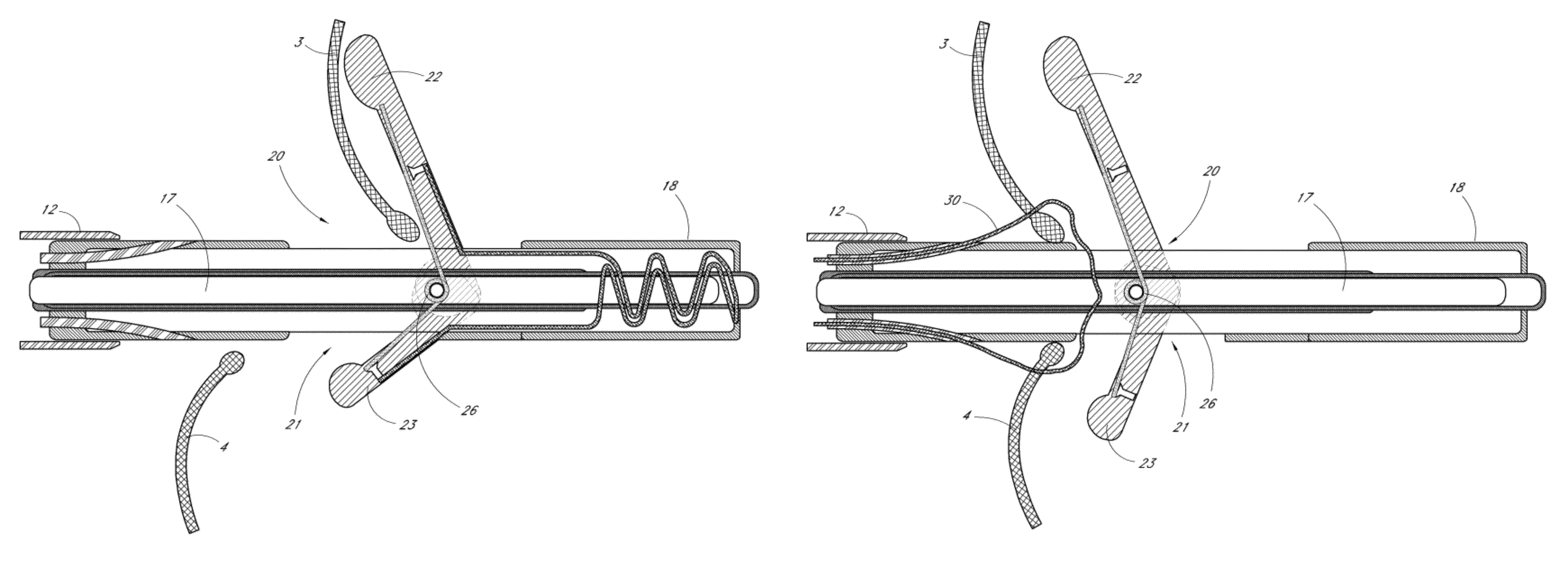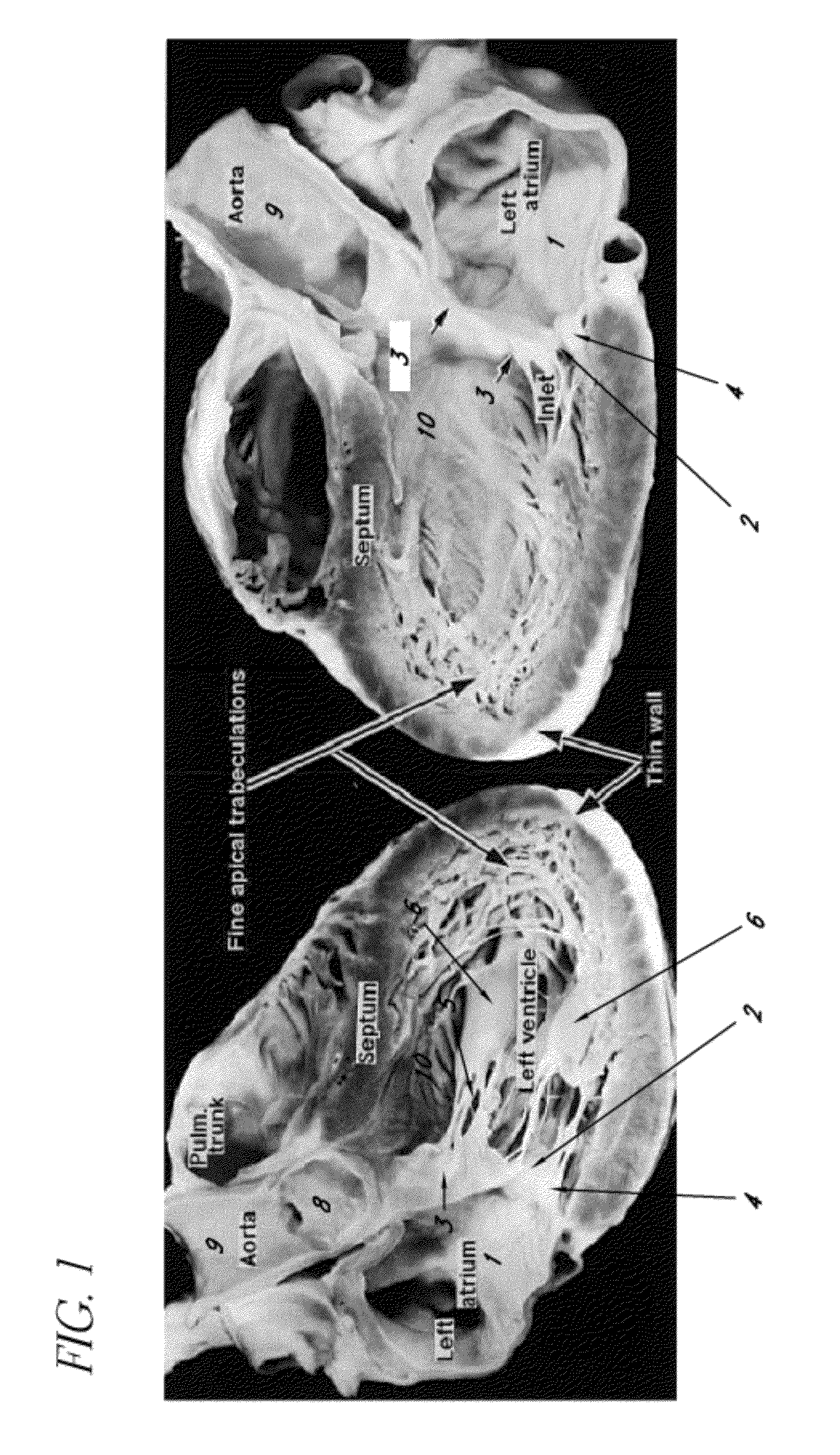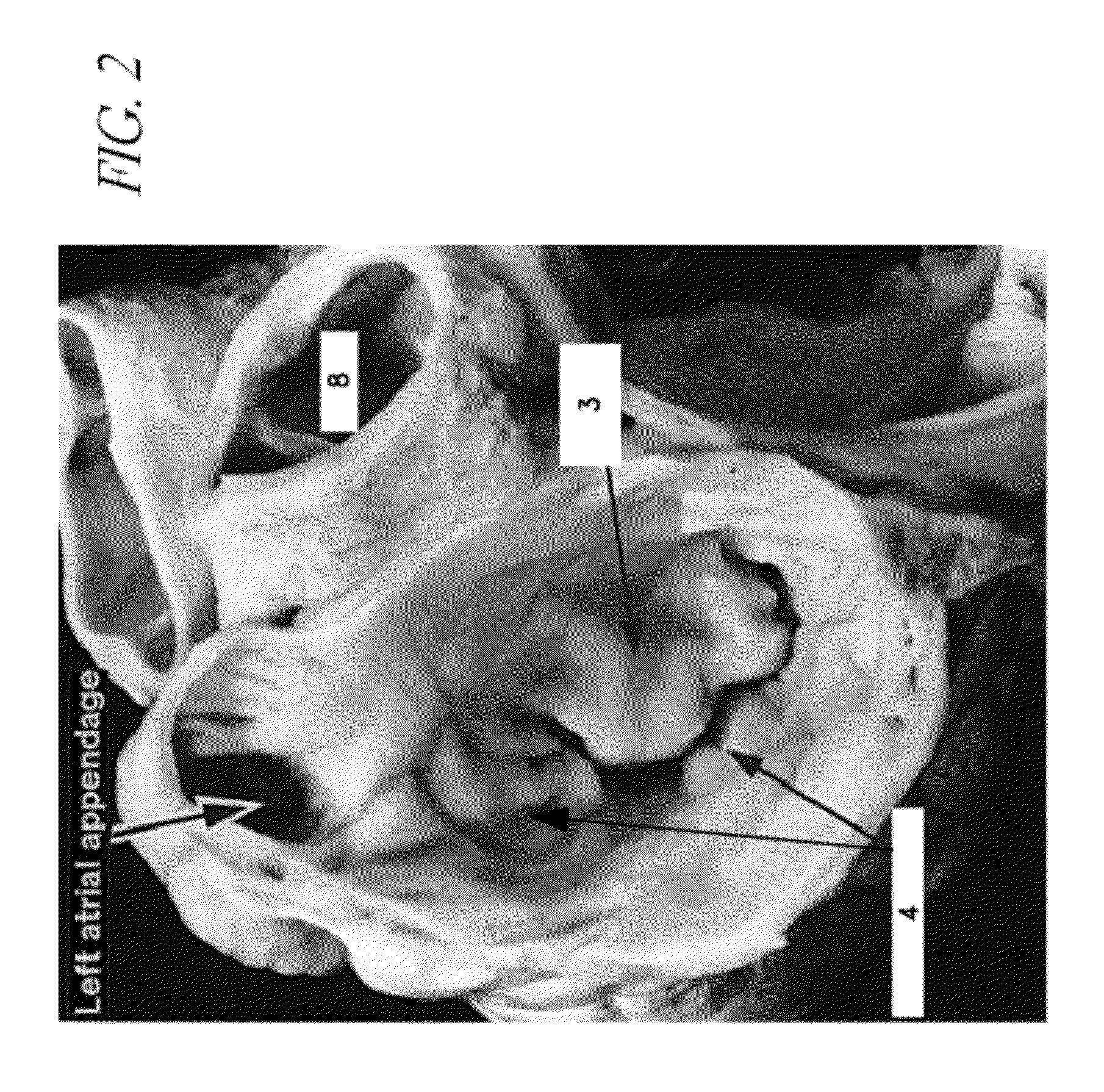Methods and apparatus for atrioventricular valve repair
a technology for atrioventricular valves and methods, applied in the field of heart valve repair, can solve the problems of valve insufficiency, serious complications, and possible death, and achieve the effects of preventing the degeneration of leaflets, reducing the number of patients, and improving the quality of li
- Summary
- Abstract
- Description
- Claims
- Application Information
AI Technical Summary
Benefits of technology
Problems solved by technology
Method used
Image
Examples
Embodiment Construction
[0044]In FIG. 1, a longitudinal section of the human heart is shown demonstrating the left atrium 1, the mitral valve orifice 2, the anterior leaflet of the mitral valve 3, and the posterior leaflet of the mitral valve 4. The subvalvular apparatus consists of the numerous chordae tendinae 5 and the papillary muscles 6. The left ventricular outflow tract (LVOT) 10 is a channel formed by the anterior leaflet of the mitral valve 3 and the interventricular septum. This Figure demonstrates the pathway the distal end of the device must take from the left atrium 1, through the mitral valve orifice 2, between the papillary muscles 6, through the LVOT 10, across the aortic valve 8 and into the ascending aorta 9.
[0045]In FIG. 2, a short axis view of the mitral valve is seen at the level of the left atrium. This demonstrates the asymmetric nature of the mitral valve leaflets. The posterior leaflet 4 has a broad base and of narrow width, while the anterior leaflet 3 has a relatively narrow base...
PUM
 Login to View More
Login to View More Abstract
Description
Claims
Application Information
 Login to View More
Login to View More - R&D
- Intellectual Property
- Life Sciences
- Materials
- Tech Scout
- Unparalleled Data Quality
- Higher Quality Content
- 60% Fewer Hallucinations
Browse by: Latest US Patents, China's latest patents, Technical Efficacy Thesaurus, Application Domain, Technology Topic, Popular Technical Reports.
© 2025 PatSnap. All rights reserved.Legal|Privacy policy|Modern Slavery Act Transparency Statement|Sitemap|About US| Contact US: help@patsnap.com



